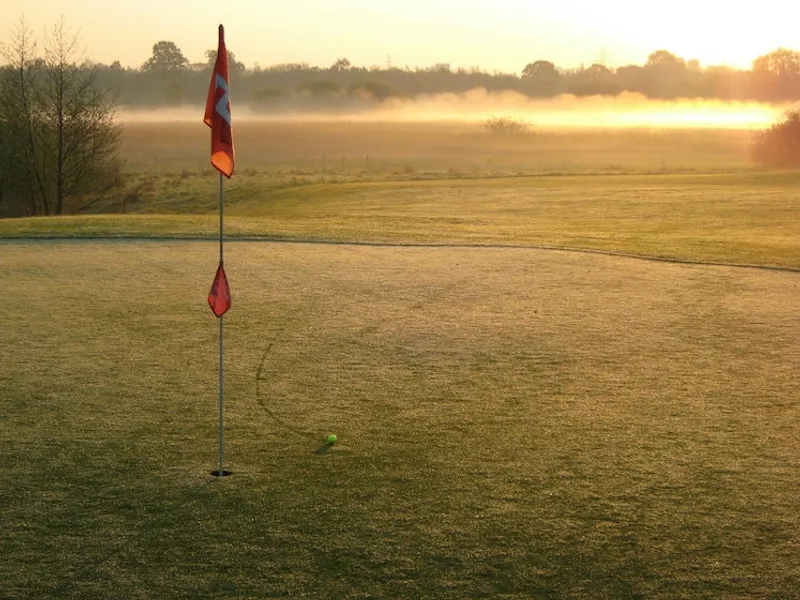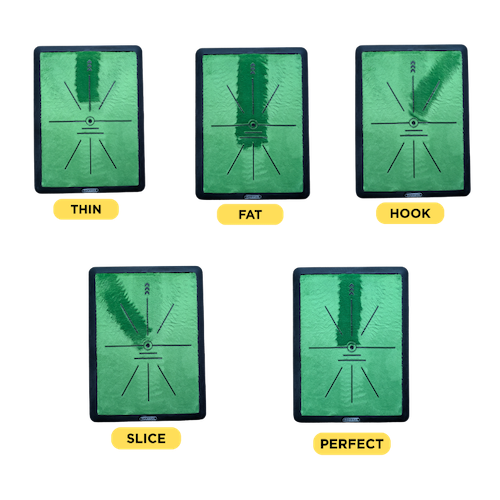Improve Your Golf Swing Tempo with Easy Step-by-Step Drills
Swing tempo isn’t about speed alone; it’s the cadence that steadies your body and club, uniting backswing and follow-through into one cohesive...

Swing tempo isn’t about speed alone; it’s the cadence that steadies your body and club, uniting backswing and follow-through into one cohesive...
Swing tempo isn’t about speed alone; it’s the cadence that steadies your body and club, uniting backswing and follow-through into one cohesive motion.
In this guide, you’ll discover what swing tempo truly means, find straightforward ways to measure its pace, and pick up practical methods to smooth out your own rhythm. Whether you’re new to the course or have been playing for years, understanding and refining your swing tempo can be the key to hitting the ball more consistently and with greater ease. Embrace the subtle heartbeat behind each swing, and learn how a measured approach can elevate your entire game.
Golf swing tempo is the overall flow that connects every phase of your swing, from the initial takeaway to the moment you strike the ball. It’s less about how fast you move the club and more about how steadily you transition from backswing to downswing. During the backswing, you position your body and club to harness potential energy; during the downswing, you release that energy at precisely the right instant. This interplay of seamless movement and well-timed transitions forms the essence of tempo. When you tune in to the swing’s natural beat, you become aware of subtle pauses—especially where the backswing transitions into the downswing—which help channel your power without losing control. By appreciating this continuous and graceful flow, you can transform the mechanics of your swing into a personalized, well-timed routine.
Struggling with thins, fats, slices—or just can’t tell what’s going wrong?
This swing mat shows you exactly how your club strikes the ball, giving instant visual feedback after every shot. With just a few swings, you’ll start spotting mistakes in your swing path that are otherwise invisible.

It’s a quick, low-hassle way to connect what you feel in your body with what’s really happening at impact.
Use it indoors or out, no ball required—just swing and learn. It’s one of the fastest ways to improve your swing right from home.
A reliable way to measure swing tempo is by looking at the balance between the various stages of your swing. The pace should feel neither rushed nor overly drawn out, but rather consistent from start to finish.
One recognized approach is to use a 3:1 ratio. This suggests that your backswing might take roughly three times longer than your downswing. Rather than seeing it as a rigid rule, you can treat the ratio as a helpful reference point. If you find yourself hurried or jerky, thinking in threes for the backswing and one for the downswing can reveal whether you need to slow down or tighten up your transition.
Simple counting drills and metronome-based exercises can bring greater consistency to your tempo. Try silently counting “one, two, three” during your backswing, then allow the downswing to flow naturally on the following beat. You can also set a metronome to match this pattern, aligning your backswing with three ticks and your downswing with the next tick. These straightforward methods let you sense whether your swing is steady and balanced.
A rhythmic, unhurried tempo ensures that every part of your swing works together, creating a powerful chain of motion. As you build energy in the backswing, a balanced tempo allows that energy to flow into the downswing without interruption. This harmony helps the club remain under reliable control at impact, enabling you to direct it accurately while maximizing power. When your rhythm is steady, each element of the swing supports the next, leading to more consistent contact and improved ball flight.
An erratic or hurried tempo can break this chain of motion. Rushing from the top of the backswing often leads to early releases and dissipated power, robbing you of both distance and accuracy. An unsteady rhythm also makes it harder for the club to square up at impact, causing unpredictable results. Over time, an inconsistent tempo can turn your swing into a disjointed effort, undermining your confidence and control.
The Sand Save
Sponsored

A widely discussed benchmark for tempo is the 3:1 backswing-to-downswing ratio. By counting softly—three counts on the way back, one count on the way down—you create a deliberate constructive phase followed by a decisive release of built-up energy. This pacing offers a sense of balance and helps you avoid rushing the top of your backswing. Many golfers find that sticking to this ratio reveals a smoother transition, which can enhance both distance and accuracy. It’s worth noting that small deviations might suit certain players’ natural rhythms better, but the 3:1 guideline remains a valuable starting point for honing your overall flow.
On the practice range, begin each swing by deliberately taking your club back with controlled steadiness. Focus on how the club travels during these measured moments, noting any tendency to accelerate too quickly. This gentle, mindful approach ingrains a more consistent backswing pace and encourages your body to become comfortable with a smooth transition into the downswing.
Before hitting the ball, shake out any tension in your hands, arms, and shoulders, then settle into a light but secure grip. By keeping your grip pressure minimal, you allow the club to move more freely throughout the swing. This looseness often encourages a natural, rhythmic flow and helps you stay aware of your swing’s fluid motion rather than forcing the club through each phase.
Set a metronome so that you have three ticks for the backswing and one for the downswing. Practice aligning your entire motion with these beats, listening closely to ensure your club and body are synchronized with the metronome’s steady pulse. This method fosters an ingrained sense of timing that can persist even when you step away from the metronome, making the tempo feel like second nature.
Golf swing tempo is the steady rhythm that unites your backswing and downswing, providing a foundation for both efficient energy transfer and reliable accuracy. By measuring and refining your tempo—whether through a 3:1 ratio, counting out your swing, or adopting drills like a relaxed grip and metronome practice—you can turn an inconsistent motion into a confident, controllable flow.
The Sand Save
Sponsored

Embrace the cadence that naturally suits your swing, and allow that measured rhythm to guide each movement on the course. By cultivating a consistent tempo, you develop a more balanced, powerful swing that can elevate both your enjoyment of the game and your performance.
Golf can initially seem like a maze of complex movements and etiquette, but honing your swing is one of the most direct ways to gain confidence on the course. This guide aims to help...
getting-started05-01-2025
Golf is often celebrated for its blend of patience, precision, and technique. Nowhere is that delicate balance more evident than in the swing itself. A well-executed swing sends the ball soaring toward the target with consistency and power, while a f...
getting-started05-12-2024
A pitch shot in golf relies on precision and touch rather than brute strength. By using a short, controlled swing and a setup often referred to as “center, center, center”—where the ball, stance, and contact point align at the center—you create the f...
instruction08-11-2024
Practice swings are a deliberate way to awaken the body and sharpen the mind. Each rehearsal helps you loosen tight muscles, settle on a rhythm, and clear any stray thoughts so that, by the time you l...
instruction29-05-2024
A golf swing does not end the moment the clubface meets the ball. The follow through acts as the culminating phase of your swing—a fluid, continuous motion that guides the club and your body into a stable, balanced finish. While it may seem secondary...
instruction06-12-2024